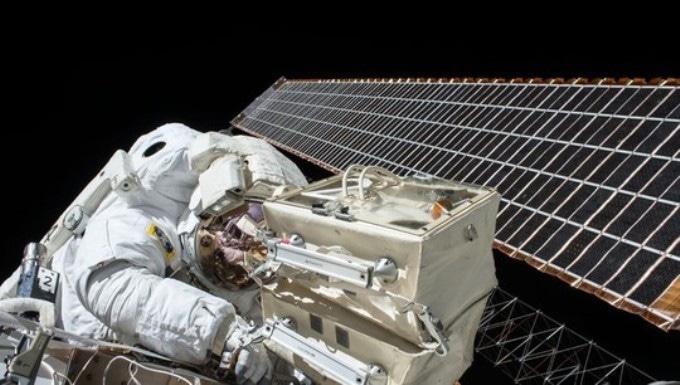Mar 26 2019
Ivan Zhidkov and Ernst Kurmaev, Department of Electrophysics, Institute of Physics and Technology, Ural Federal University, in collaboration with coworkers from Skoltech, the Institute of Problems of Chemical Physics of the Russian Academy of Sciences and Moscow State University, have determined unknown properties of perovskite solar cells.
 Scientists have found that hybrid iodine-rich and bromine-rich complex lead halides are not suitable for use in space. (Image credit: NASA)
Scientists have found that hybrid iodine-rich and bromine-rich complex lead halides are not suitable for use in space. (Image credit: NASA)
The study outcomes have been published in the Journal of Physical Chemistry Letters.
The properties determined by the researchers have so far not facilitated the use of batteries in satellites and spacecraft because the hybrid bromide–iodide complex lead halides in their composition could not exhibit the required high-dose γ-radiation tolerance. The efficiency of the solar cells decreased by 32%–41% upon being exposed to higher irradiation.
Solar batteries in space must withstand not only increased radiation, but also be resistant to relatively high doses of gamma rays, which is necessary for stable operation of devices in orbit for several years. In our work, we investigated the complex halide Cs0.15MA0.10FA0.75Pb(Br0.17I0.83)3 with a perovskite structure, also called triple-cation perovskite and considered the most stable in this group of materials. Perovskite films and solar cells were subjected to hard γ-ray irradiation with a dose of up to 5,000 Gy. Within 300 Gy, perovskite solar cells turned out to be quite stable, but with a further increase in dose, a rapid drop in short circuit current and light conversion efficiency in devices was found.
Alexandra Boldyreva, Postgraduate, Skoltech.
Currently, the researchers have aimed to discover more stable materials.
Perovskite is calcium titanate, which is a rare mineral. Perovskite solar cells are more lightweight and inexpensive compared to silicon. Moreover, the manufacturing of perovskite is harmless. The elements could potentially be made thin and flexible, which makes them favorable in space applications.